OnLive Review
OnLive
OnLive just got better thanks to tablet and smartphone support. But is it worth checking out?
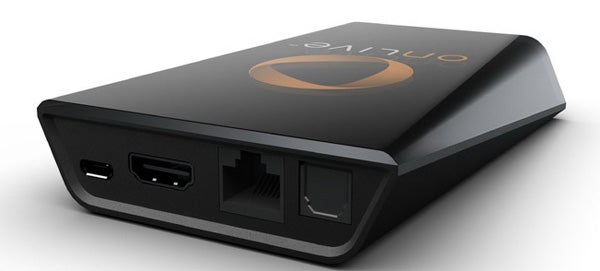
Verdict
Pros
- Easy-to-use, attractive interface
- Decent controller
- Available across breadth of platforms
- Good value Playback sub
Cons
- No Wi-Fi on MicroConsole
- MicroConsole controller doesn't work with tablets/PC
- Reduced video quality
- Not all games are transmitted with top settings
Key Specifications
- Review Price: £65.00
- Wireless game streaming
- PC/tablet/Mac/smartphone support
- 200+ games
- MicroConsole with controller
- Free 30-min demos
OnLive is the first large-scale roll-out of a long fantasised-about gaming “pipe-dream” – being able to play just about any game you like, instantly, without needing specific hardware, or physical media. And guess what – it works. You can play the service’s hundreds of games from your Mac or PC, through your TV with the help of a Microconsole, or even on your Android tablet or smartphone. But is it next-gen gaming or something that should have remained a fantasy for a year or two more?
One of the most attractive things about the OnLive service for newcomers is that there are no strange hidden fees involved – as long as you do your research to see how the basics work. Joining up is free, and like most online memberships these days, only takes a few minutes to complete. There is a short wait while your account is made “live”, but done at the right time this should take minutes rather than hours. After this, you’re free to play a half-hour of any of the games on the service, as a demo. 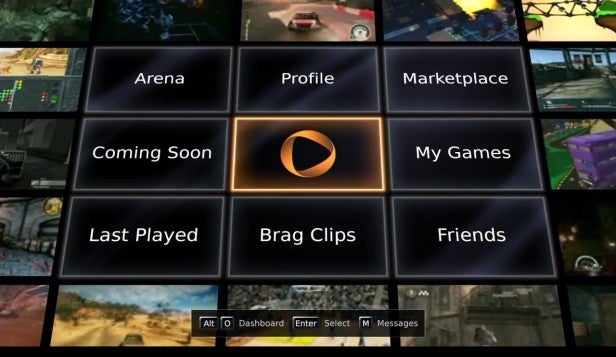
To get a real taste of what the “OnLive way” is all about, you’ll need to either rent or buy games, or join the Playback scheme. Buying games isn’t particularly cheap – around £30-35 for a brand-new title – and renting them for three or five days costs £3.99 and £5.99 respectively. The key benefit is convenience rather than reduced cost if you want to play brand new games. With OnLive, you can play Batman: Arkham City on a netbook, which would normally result in the integrated graphics chip turning to dust and blowing out of the fan grille.
Fitting-in well with a casual audience, the alternative subscription-based Playback option of Onlive will be an attractive starting point for many. This £6.99-a-month plan gives you access to around 150 games (most of the library), but not the lastest-and-greatest titles. It does, however, offer a number of current-gen console classics, including Bioshock, Borderlands and Lego Batman. A key selling of Playback is that you’re not tied to a contract – you can cancel at any time.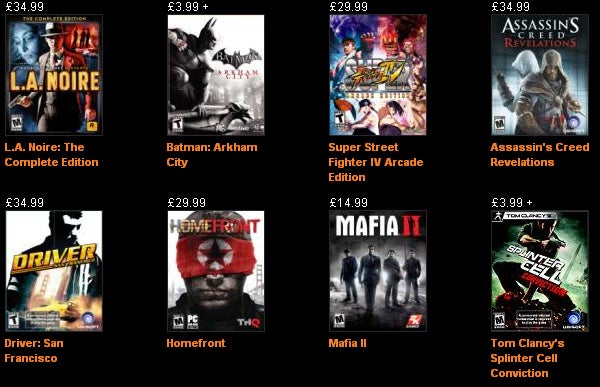
The service is still in its nascent stage, but currently offers around 200 games in total. Some were released in the 90s, some this month. At the time of writing, the rate of new releases appears to be ramping-up, with four grand-slam AAA titles released in November – Assassin’s Creed: Revelations, Batman: Arkham Asylum, Lord of the Rings: WitN and Saint’s Row: The Third. If this acceleration continues, Onlive could become a viable way to check out the latest releases. However, the omissions are significant. There’s no Skyrim, no Call of Duty: Modern Warfare 3 – enough to make sure Onlive isn’t going to completely satisfy many.
This isn’t exactly Onlive’s fault, of course. We’re sure the company would love to see these titles on their service, but many publishers are predictably reticent to risk cannibalising their retail sales. At present, keen gamers are best off thinking of Onlive as a complement to console gaming, rather than a replacement for it. There are also compromises in video quality involved that may put off many of you.
The particular setup process of OnLive depends on what hardware you’re using – Microconsole, PC or tablet/smartphone – but all are quite simple. We’ll get onto the quirks of each later.
When using OnLive, the vast majority of the processing legwork is performed by OnLive’s servers rather than your hardware. Your controller movements are registered at your end, but what is piped back to you is an up-to-720p video signal – hence why almost any hardware can handle it.
This mechanism lets the interface remain very consistent throughout the supported platforms. And it’s a good one. 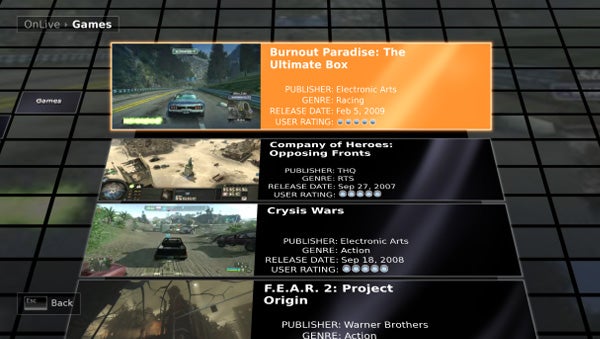
The OnLive frontend is quite showy, full of 3D visuals and swish animated transitions, but crucially it doesn’t slow your passage from start screen to game very much. As far-away servers are doing all the work, it’s smooth and quick-to-navigate the whole time. We’d like to see a non-fancy 2D version of the menu system added as an option too, as people often tire of needless gloss, but – as is – it’s highly intuitive and clear.
OnLive recommends a 2Mb connection to get a good streaming experience – around 256kb/sec theoretical download speed. We tested the service using a 20MB home broadband connection that maxes-out around 1.1MB/sec download. In theory, we should have seen the best the service has to offer.
At its best, OnLive outputs 720p video, carefully encoded using proprietary techniques that make this ambitious remote gaming possible. The video quality is not perfect. Image quality is a little softer than what you’d see from a games console outputting 720p video quality, and there’s quite a bit of mosquito noise in some situations. This digital artefacting crops-up mostly around areas of precise detail – such as text.
Onlive is also very aggressive about how it tailors the video signal to your connection speed. The priority is, quite rightly, keeping the feed going, and there appears to be some pre-emptive downgrading of signal quality when signs of connectivity strife arise. We noticed occasional moments where the video bitrate would dip drastically, causing the image to become much softer and introducing many more signs of digital decay. For the most part, we played over Wi-Fi, which may have had a hand in exacerbating these problems. If you have a remotely unreliable internet connection, these problems will blow up in Onlive’s face.
However, with a rock-solid, high-speed connection, we found image quality more-than-acceptable as a gaming platform to use alongside a console. Some games fare better with the video encoding process better than others, too. Bastion and Puzzle Quest looked pretty fab, for example, while we found it harder to get used to the soft look of Dirt 3 – which looks fantastic on a console or high-spec PC.
There are other graphics issues you have to live with too. Not every game appears to be transmitted with all graphical bells and whistles turned on. Presumably, this is a strategy to take some control over server load, but is another factor that will irk the hardcore. The most common nagging things we spotted were missing lighting effects, cut-down view distance and texture limitations. Hand-in-hand with the video encoding quibbles, it’s clear that this is an area OnLive needs to work on in the future.
Another area where you might imagine performance would suffer is in lag, due to the amount of to-ing and fro-ing of data that goes on from translating your controller movements into video. However, we found only the tiniest discernible delay apart from when the connection started playing up – causing some very odd mouse movements. Hardcore FPS gamers won’t be happy, but for adventure games and less hair-trigger shooters, the response rate is fine. OnLive is far from perfect, but given how widely available the service is already, offering this level of performance is hugely impressive.
The MicroConsole is Onlive’s connection method for those who want to get games streamed to their TV, but don’t want to output the video signal from their computer. It’s a little black box, roughly the size of a 2.5in hard drive, and comes with a wireless controller.
The console is finished in glossy black and constructed of metal and plastic. Its angular design and large Onlive logo won’t make it the pride of a stylish living room, but build quality is excellent. And it’s small and light enough to stash away in a bag and take over to a friend’s house – it’s much more compact than the controller.
While impressive, it’s hardly a wild feat of engineering, considering how little the MicroConsole has to do, processing-wise. The console connects to your TV using an HDMI socket on its back, and there’s an optical audio output if you’d prefer to hook up the audio to a source other than your television. OnLive offers surround sound in some games, so having this audio output to hand is a big plus. To hook up to a lower-end audio system – a pair of portable speakers perhaps – there’s also a 3.5mm stereo audio output.
The most important connection of all, though, is the Ethernet port. This plugs into your router to give the MicroConsole access to your home network, and therefore OnLive. Our biggest criticism of the MicroConsole itself is that there is no Wi-Fi built-in. This helps to ease connection problems, but also massively reduces its flexibility. With Wi-Fi, this could have been a perfect gadget to take on trips involving nights in lonely hotel rooms, where the TV only seems to dole-out badly-dubbed Jim Carrey films. It would also have boosted its potential as a unit for kids’ bedrooms.
There are ways around being tied to the router – you could use your laptop as a wireless bridge or buy a wireless access point to let you move further away – but none are quite as good as having Wi-Fi as an option. We can understand OnLive’s need to keep the price of the unit down – especially as production costs are relatively high for a product early in its life cycle – but, boy, would we love a Wi-Fi MicroConsole.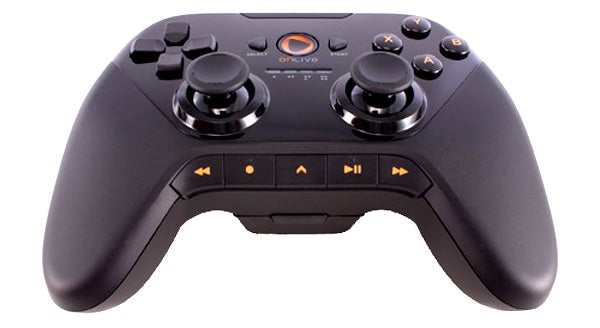
The wireless controller that comes boxed with the MicroConsole is heavily indebted to the Xbox 360 pad. It’s curvy and chunky, designed to fill your hands in a way that the lighter PlayStation controllers do not. Third-party controllers rarely manage to touch upon the quality of those of a console manufacturer, but this is a decent stab at it. The plastics used are thick, giving it that high-quality creak-free feel, and the ergonomics of its curves make holding the thing very comfy.
The button layout is just-about identical to an Xbox 360 pad – four main buttons, a D-pad, two analogue sticks, two triggers and two shoulder buttons. The action of the D-pad isn’t perfect, but otherwise the buttons have a high-quality feel that gives you confidence that its sticks aren’t going to snap off when things get a little hairy. A rechargeable battery pack is supplied, which plugs into the back of the pad and is charged by connecting a microUSB cable to the console itself. There are two USB ports on its front, and these can also be used to plug in mice and keyboards, which is helpful when some games are designed for use with such things.
What’s disappointing about the wireless controller is that it can’t be used with any other medium supported by OnLive. It won’t connect to your PC or to a tablet – it’s just for the MicroConsole. OnLive has just launched the Universal Wireless Controller, which works with other platforms and the MicroConsole. This slip-up and the lack of Wi-Fi make this package feel like a first-try desperately in need of a second.
However, if you’re happy with the lack of Wi-Fi, additional Universal Controllers can be bought for £39.99. The MicroConsole supports up to four controllers.
The simplest way to check out OnLive for many will be with a PC or Mac, as it requires no additional purchases whatsoever. You simply download a tiny program from the official website, and register for your account.
Following this, you’ll be able to check out the quality of OnLive, gratis, through its 30-minute demos. These are 30-minute play sessions of the real game, not the usual sort of pre-determined demo scenarios.
Keyboards and mice can be used to control games on a computer, as well as the Universal Wireless gamepad, which is identical to the one bundled with the MicroConsole, aside from the addition of flexible Bluetooth support. Some third-party gamepads are supported too, but the list is fairly limited at present. However, it does include popular choices like the Microsoft Xbox 360 Controller for Windows, the Logitech Chillstream and the Madcatz Gamepad. Shop around and you’ll find the Chillstream for around a tenner.
Investing in an official Universal Wireless controller, which sells for £40, guarantees you support across the board, though. And now this board includes support for tablets and smartphones. The iOS app is yet to be released, and may never be thanks to Apple’s strict app restrictions, but we checked it out on an Asus Eee Pad Transformer.
The interface works perfectly with the touchscreen – it’s just gaming
that’s a problem. OnLive is doing its best, though, creating touchscreen
control templates for each game that requires it.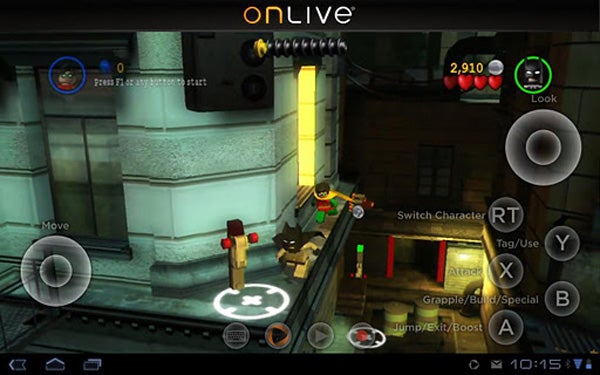
At present, only a handful of games have been given this treatment – making a great many games unplayable on the touchscreen. We tried out a few that did work, and found the results varied hugely.
Games designed for use with a mouse tend to work very well. Puzzle Quest felt natural on the touchscreen requiring no special buttons, but Dirt 3 was something of a nightmare. We rolled more than a few rally cars into ditches during our testing.
In these touchscreen-tailored games, buttons and switches are dropped onto the screen, along with indicators telling you what each does. It’s a turbo-charged version of the way virtual controls are implemented in current smartphone and tablet games And we honestly don’t think it’ll ever work particularly well for many games. Physical controls are too far removed from touchscreen control, so if a tablet is going to be your main OnLive platform, it’s worth investing in the Universal Wireless pad.
A problem that won’t be solved with a gamepad is video quality. We found that video quality is worse than when using a PC or the MicroConsole, with the same connection. Reading small text becomes almost impossible, and games just don’t look quite as good throughout. Without a direct comparison to consult, though, just having full console games running on your tablet is a thrill, and one that would become pretty practical once a controller is added to the equation. 
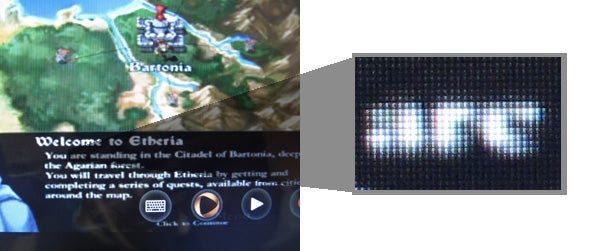
Using a tablet offers the portability that the MicroConsole sorely misses, and when matched with the right game and Wi-Fi connection, it works just as well as its PC counterpart. It won’t run off 3G, but does support 4G in the US. Once the UK jumps on that bandwagon properly in, say, 2018, it’ll be fantastic.
OnLive doesn’t yet offer the quality of experience that would get us to dump our consoles and list our graphics cards on eBay. However, it’s a mostly-great and mostly-practical solution that offers access to many great games for less than the price of a World of Warcraft subscription. It’s also perhaps the best way to make your gaming experience truly multi-platform. OnLive uses cloud storage of saved games, so you can take up where you left off when switching between tablets, a computer or a MicroConsole.
Until OnLive starts shifting a version of the MicroConsole that includes a Universal Wireless controller and Wi-Fi support, we’d advise sticking to the PC and tablet versions of the service if possible. But on those platforms it represents great value if you make your purchasing decisions carefully enough.
Verdict
A proof of concept and a lot more besides, OnLive offers a workable and versatile remote gaming solution that lets you continue your at-home gaming adventures on-the-go, better than almost any other method. Video quality issues and a slightly limited rate of new releases stop us from choosing OnLive as our exclusive gaming partner, but it’s something all fans of gaming tech should check out.
Trusted Score
Score in detail
-
Value 8
-
Features 7
-
Design 9
-
Usability 9
-
Performance 7


